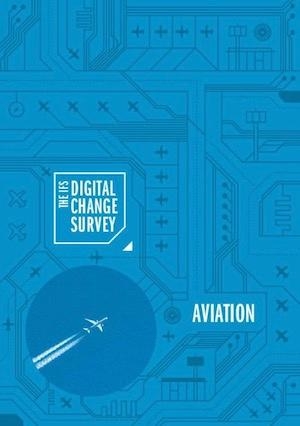Augmented Reality Identified As Key Technology To Mitigate Aircraft Downtime
Enterprise applications company IFS has announced the release of commercial aviation industry-specific results of its Digital Change Survey. The study found that the aviation sector is more advanced in leveraging digital transformation than the other major industries surveyed, with automation identified as having the highest level of disruption in the sector. Unplanned maintenance was ranked as the biggest challenge facing airline operational availability, with augmented reality (AR) named as a key technology to help combat the situation.

Of the commercial aviation companies surveyed, 44 percent regarded themselves as advanced in leveraging digital transformation – ahead of the other industries that participated: construction and contracting (39 percent), manufacturing (29 percent), service (23 percent) and oil and gas (19 percent). When asked about the technology drivers behind their digital transformation, respondents ranked automation as the most disruptive, followed by big data, robotics, augmented reality and IoT.
Key report findings were:
- Nearly 60 percent of the organizations cite operational availability as the biggest industry challenge, almost half identify unplanned maintenance and regulatory compliance as key priorities
- Over three quarters (77 percent) of companies surveyed look to augmented reality to reduce impact of unplanned maintenance via remote support and to provide one-to-many knowledge transfer
- Automation, Big Data, Robotics, Augmented Reality and IoT ranked as top five most disruptive technologies
- Internet of Things (IoT) (39 percent), big data analytics (39 percent), artificial intelligence (37 percent), Enterprise Resource Planning (ERP) (33 percent) and mobile computing and applications (31 percent) identified as areas for investment
Almost 60 percent of respondents reported operational availability as a significant challenge in commercial aviation, with 68 percent of organizations in the Asia-Pacific region and 46 percent in North America reporting it as their biggest challenge. Just under half of the respondents ranked both unplanned maintenance and regulatory compliance (both 47 percent) as having the biggest impact on operational availability, closely followed by contractual restrictions (43 percent).
Looking at potential solutions, 77 percent of aviation professionals said augmented reality could help technical teams better react to unplanned maintenance. Aviation companies based in North America (65 percent) and EMEA (67 percent) said remote support through technologies such as AR could eventually be as effective as in-person engineers, but that they did not anticipate full replacement of local engineer teams in the next decade – 53 percent in Asia-Pacific agreed.
When asked about areas of investment, IoT and big data analytics tied as the top ranked, each identified by 39 percent of respondents. One third of aviation professionals (33 percent) also listed ERP as a key focus. Others in the top five included artificial intelligence (37 percent) and mobile computing and applications (31 percent).
“The commercial aviation industry is at the forefront of digital transformation, so it comes as no surprise that airlines are looking at automation and other innovative technologies to address key pain points,” said Graham Grose, Vice President and Industry Director at the Aviation & Defense Business Unit, IFS. “Augmented reality is the perfect fit to quickly address unscheduled maintenance events – many of which occur in difficult to reach locations with limited availability of skilled engineers on the ground. Rather than flying out a team of engineers to address this challenge, augmented reality offers the possibility of one-to-many knowledge transfer, helping return aircraft to operational status as quickly as possible and solving the impending maintenance engineer shortage in the industry.”
(Source: IFS news release)
 Sierra Space Repositions Dream Chaser for First Mission
Sierra Space Repositions Dream Chaser for First Mission ANN's Daily Aero-Term (05.10.24): Takeoff Roll
ANN's Daily Aero-Term (05.10.24): Takeoff Roll Aero-News: Quote of the Day (05.10.24)
Aero-News: Quote of the Day (05.10.24) Aero-News: Quote of the Day (05.11.24)
Aero-News: Quote of the Day (05.11.24) ANN's Daily Aero-Term (05.11.24): IDENT Feature
ANN's Daily Aero-Term (05.11.24): IDENT Feature



